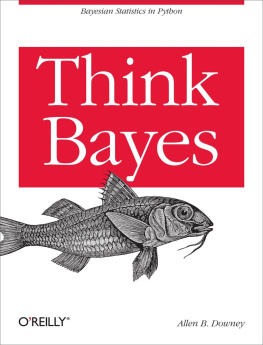Why I Wrote This Book
Think Stats is a textbook for a new kind of introductory prob-stat class. It emphasizes the use of statistics to explore large datasets. It takes a computational approach, which has several advantages:
Students write programs as a way of developing and testing their understanding. For example, they write functions to compute a least squares fit, residuals, and the coefficient of determination. Writing and testing this code requires them to understand the concepts and implicitly corrects misunderstandings.
Students run experiments to test statistical behavior. For example, they explore the Central Limit Theorem (CLT) by generating samples from several distributions. When they see that the sum of values from a Pareto distribution doesnt converge to normal, they remember the assumptions the CLT is based on.
Some ideas that are hard to grasp mathematically are easy to understand by simulation. For example, we approximate p-values by running Monte Carlo simulations, which reinforces the meaning of the p-value.
Using discrete distributions and computation makes it possible to present topics like Bayesian estimation that are not usually covered in an introductory class. For example, one exercise asks students to compute the posterior distribution for the German tank problem, which is difficult analytically but surprisingly easy computationally.
Because students work in a general-purpose programming language (Python), they are able to import data from almost any source. They are not limited to data that has been cleaned and formatted for a particular statistics tool.
The book lends itself to a project-based approach. In my class, students work on a semester-long project that requires them to pose a statistical question, find a dataset that can address it, and apply each of the techniques they learn to their own data.
To demonstrate the kind of analysis I want students to do, the book presents a case study that runs through all of the chapters. It uses data from two sources:
The National Survey of Family Growth (NSFG), conducted by the U.S. Centers for Disease Control and Prevention (CDC) to gather information on family life, marriage and divorce, pregnancy, infertility, use of contraception, and mens and womens health. (See http://cdc.gov/nchs/nsfg.htm.)
The Behavioral Risk Factor Surveillance System (BRFSS), conducted by the National Center for Chronic Disease Prevention and Health Promotion to track health conditions and risk behaviors in the United States. (See http://cdc.gov/BRFSS/.)
Other examples use data from the IRS, the U.S. Census, and the Boston Marathon.
How I Wrote This Book
When people write a new textbook, they usually start by reading a stack of old textbooks. As a result, most books contain the same material in pretty much the same order. Often there are phrases, and errors, that propagate from one book to the next; Stephen Jay Gould pointed out an example in his essay, The Case of the Creeping Fox Terrier.[]I did not do that. In fact, I used almost no printed material while I was writing this book, for several reasons:
My goal was to explore a new approach to this material, so I didnt want much exposure to existing approaches.
Since I am making this book available under a free license, I wanted to make sure that no part of it was encumbered by copyright restrictions.
Many readers of my books dont have access to libraries of printed material, so I tried to make references to resources that are freely available on the Internet.
Proponents of old media think that the exclusive use of electronic resources is lazy and unreliable. They might be right about the first part, but I think they are wrong about the second, so I wanted to test my theory.
The resource I used more than any other is Wikipedia, the bugbear of librarians everywhere. In general, the articles I read on statistical topics were very good (although I made a few small changes along the way). I include references to Wikipedia pages throughout the book and I encourage you to follow those links; in many cases, the Wikipedia page picks up where my description leaves off. The vocabulary and notation in this book are generally consistent with Wikipedia, unless I had a good reason to deviate.
Other resources I found useful were Wolfram MathWorld and (of course) Google. I also used two books, David MacKays Information Theory, Inference, and Learning Algorithms , which is the book that got me hooked on Bayesian statistics, and Press et al.s Numerical Recipes in C . But both books are available online, so I dont feel too bad.
Contributor List
Please send email to
If you include at least part of the sentence the error appears in, that makes it easy for me to search. Page and section numbers are fine, too, but not quite as easy to work with. Thanks!
Lisa Downey and June Downey read an early draft and made many corrections and suggestions.
Steven Zhang found several errors.
Andy Pethan and Molly Farison helped debug some of the solutions, and Molly spotted several typos.
Andrew Heine found an error in my error function.
Dr. Nikolas Akerblom knows how big a Hyracotherium is.
Alex Morrow clarified one of the code examples.
Jonathan Street caught an error in the nick of time.
Gbor Liptk found a typo in the book and the relay race solution.
Many thanks to Kevin Smith and Tim Arnold for their work on plasTeX, which I used to convert this book to DocBook.
George Caplan sent several suggestions for improving clarity.
Julian Ceipek found an error and a number of typos.
Stijn Debrouwere, Leo Marihart III, Jonathan Hammler, and Kent Johnson found errors in the first print edition.
Dan Kearney found a typo.
Jeff Pickhardt found a broken link and a typo.
Jrg Beyer found typos in the book and made many corrections in the docstrings of the accompanying code.
Tommie Gannert sent a patch file with a number of corrections.
Conventions Used in This Book
The following typographical conventions are used in this book:
Italic
Indicates new terms, URLs, email addresses, filenames, and file extensions.
Constant widthUsed for program listings, as well as within paragraphs to refer to program elements such as variable or function names, databases, data types, environment variables, statements, and keywords.
Constant width boldShows commands or other text that should be typed literally by the user.
Constant width italicShows text that should be replaced with user-supplied values or by values determined by context.
Tip
This icon signifies a tip, suggestion, or general note.
Caution
This icon indicates a warning or caution.

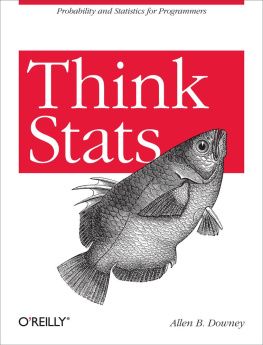
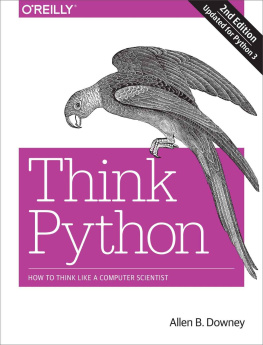
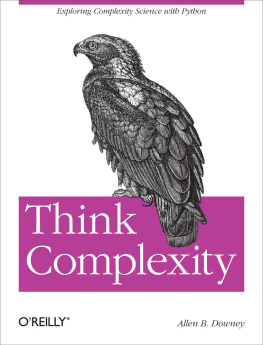


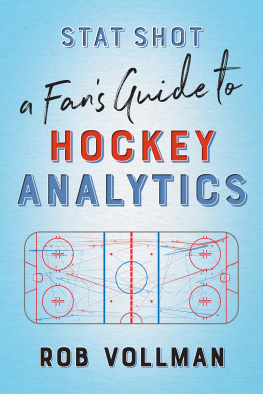
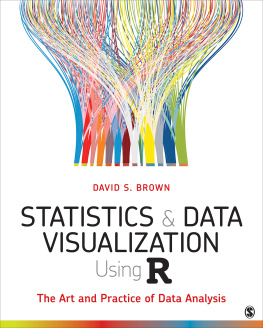
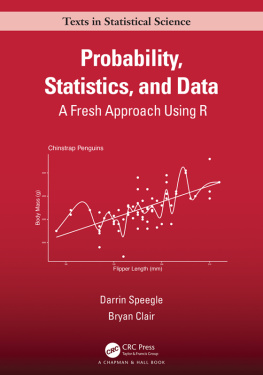
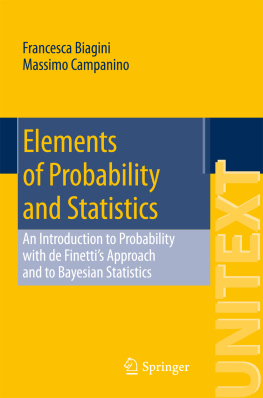

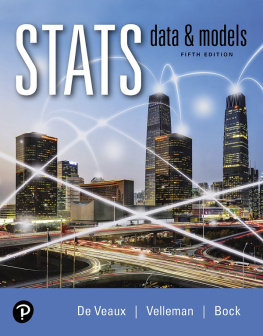
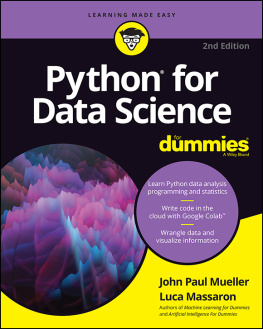
![James D. Miller [James D. Miller] - Statistics for Data Science](/uploads/posts/book/119637/thumbs/james-d-miller-james-d-miller-statistics-for.jpg)
